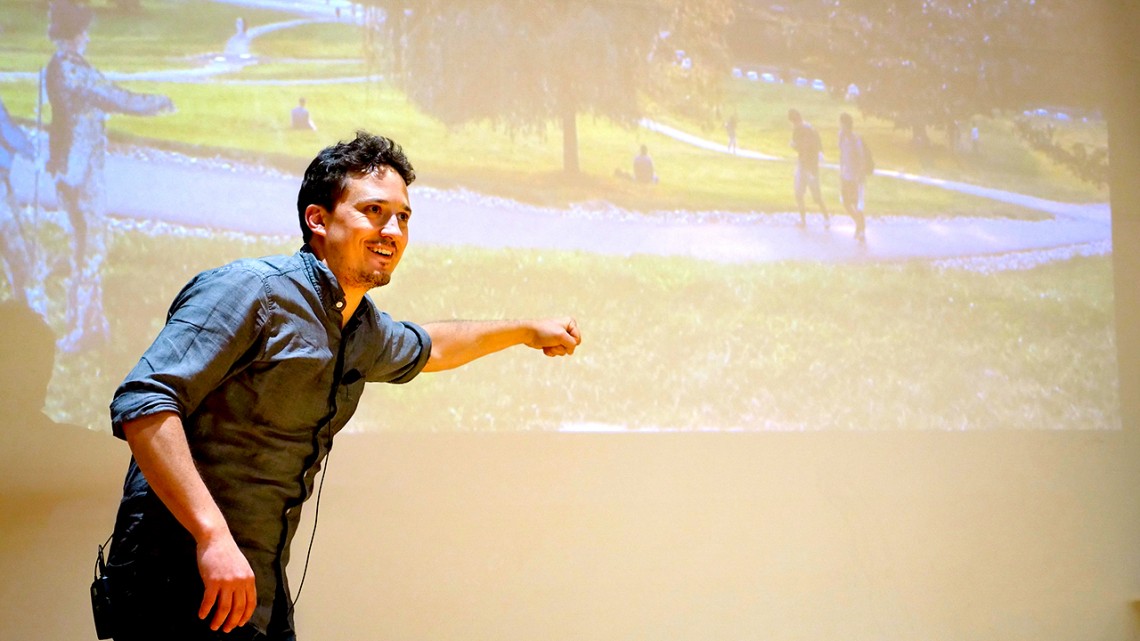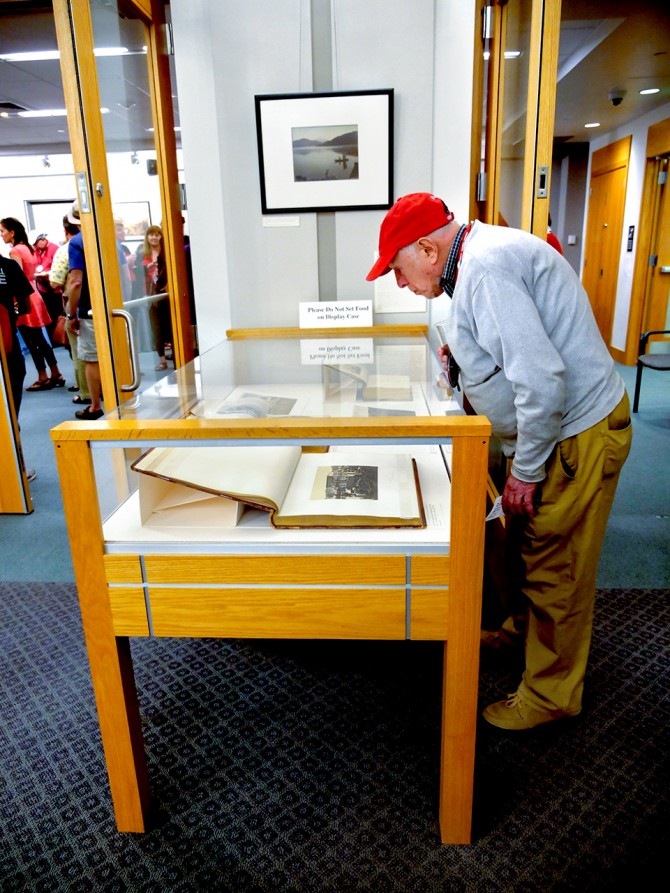
Andrew Moisey, assistant professor of the history of art and visual studies, delivers the talk “Forever Your Journey: Capturing the Experience of Faraway Places, 1700-1900” at Reunion.
Reunion talk travels through time, and art
By Linda B. Glaser
Travelers to Reunion were introduced to the origins and evolutions of travel photography by Andrew Moisey, assistant professor of the history of art and visual studies, in a June 6 talk, “Forever Your Journey: Capturing the Experience of Faraway Places, 1700-1900,” in Goldwin Smith Hall’s Hollis E. Cornell Auditorium.
Gerald Beasley, university librarian, introduced the talk, which was followed by a reception at the Hirshland Exhibition Gallery in Kroch Library where “World Picture: Travel Imagery Before and After Photography” was on display.
For much of the history of art, most pictures made were not of real places. There was no concept of using artistic talent to “copy” what was already there, Moisey said.
Views of real towns didn’t become a genre until the late 17th century and, according to Moisey, it was largely thanks to the Venetian painter Canaletto. He began his career painting theater scenery, but when he noticed how many British people came to Venice, he decided to market pictures to them. Canaletto cleaned up the scenes he painted, “making them more mechanical and sanitized” to appeal to the British, then sold them to tourists, Moisey said.
As the idea of traveling and pictures of where you were going became more popular, travelogues with images began being created.
Using an empty picture frame as a prop, Moisey demonstrated perspective and described how it had evolved. “The very first function of a figure in a landscape was to tell us how big things were,” he said. “They’re teaching tools and also scale tools, a way of measuring.”
Moisey pointed out the figures of gesturing people – often very small – in paintings from the 17th and 18th centuries who stood off to the side of the scene, pointing at something in it. “These types of figures function as an avatar,” Moisey explained. “That’s you in the picture.
“You’re able to identify with the picture differently when you see someone beholding the whole scene,” he added. “It’s a way of looking at a landscape as a way of understanding yourself better. People pointing at things lets you enter the landscape and step back and forth with them.”
Many of the subjects of paintings with these avatars were of powerful forces of nature, such as Niagara Falls or a raging sea.
When you look at such scenes, Moisey said, “you get the terrifying sense of nature as absolutely more powerful than you. Viewers are left wondering, ‘if nature is everything, what is my worth? I’m so small and insignificant.’ But the avatar communicates that there’s something about me that nature doesn’t have: I can make aesthetic decisions, I have morality. The figure in the painting brings to the picture this moral compass and the ability to appreciate the scene, to look at it and learn something about yourself.”
Moisey demonstrated that in the “World Picture” exhibit, many of the paintings between 1800 and 1840 have avatars, but after that point the foreground figures drop off noticeably.
“This is around the time when photography was invented,” he explained. “Although this is correlation, not necessarily causation, it does mark the end of the way that paintings taught us to look at the art of the picturesque. With photography, you put yourself in the space without the need for an avatar. The picture was finally about you and you being there.”
Moisey’s research investigates how photography became an art that deals with philosophical problems. His book project, “The Photographic World Picture,” shows how four artists took pictures that reflected prevalent philosophical views of their time. His recent photography book “The American Fraternity” was named by Time and Buzzfeed as the best photo book of 2018.
Linda B. Glaser is a writer for the College of Arts and Sciences.
Media Contact
Get Cornell news delivered right to your inbox.
Subscribe

